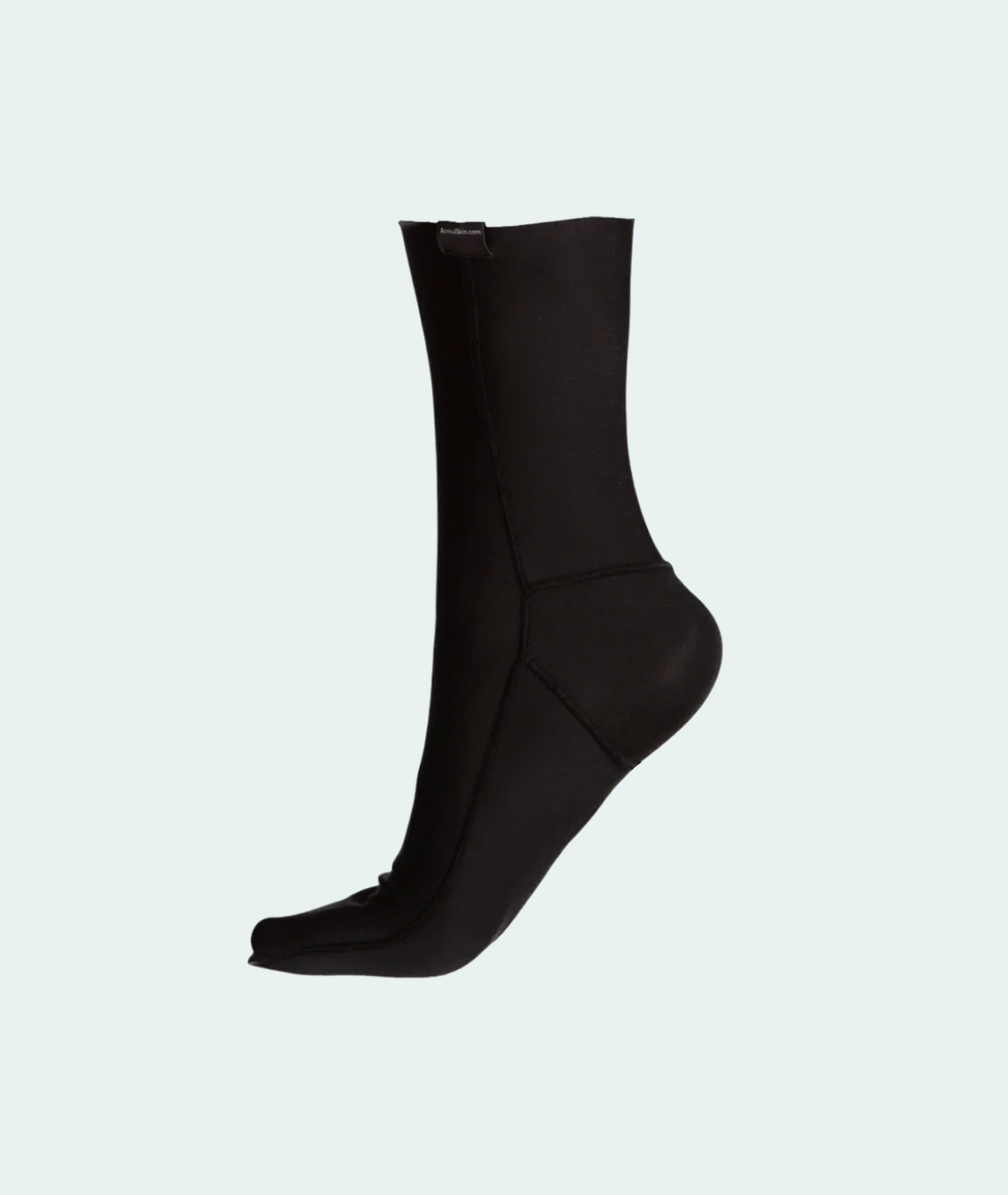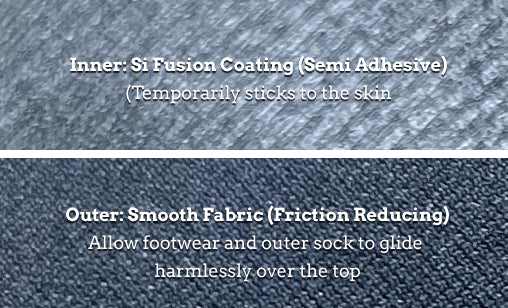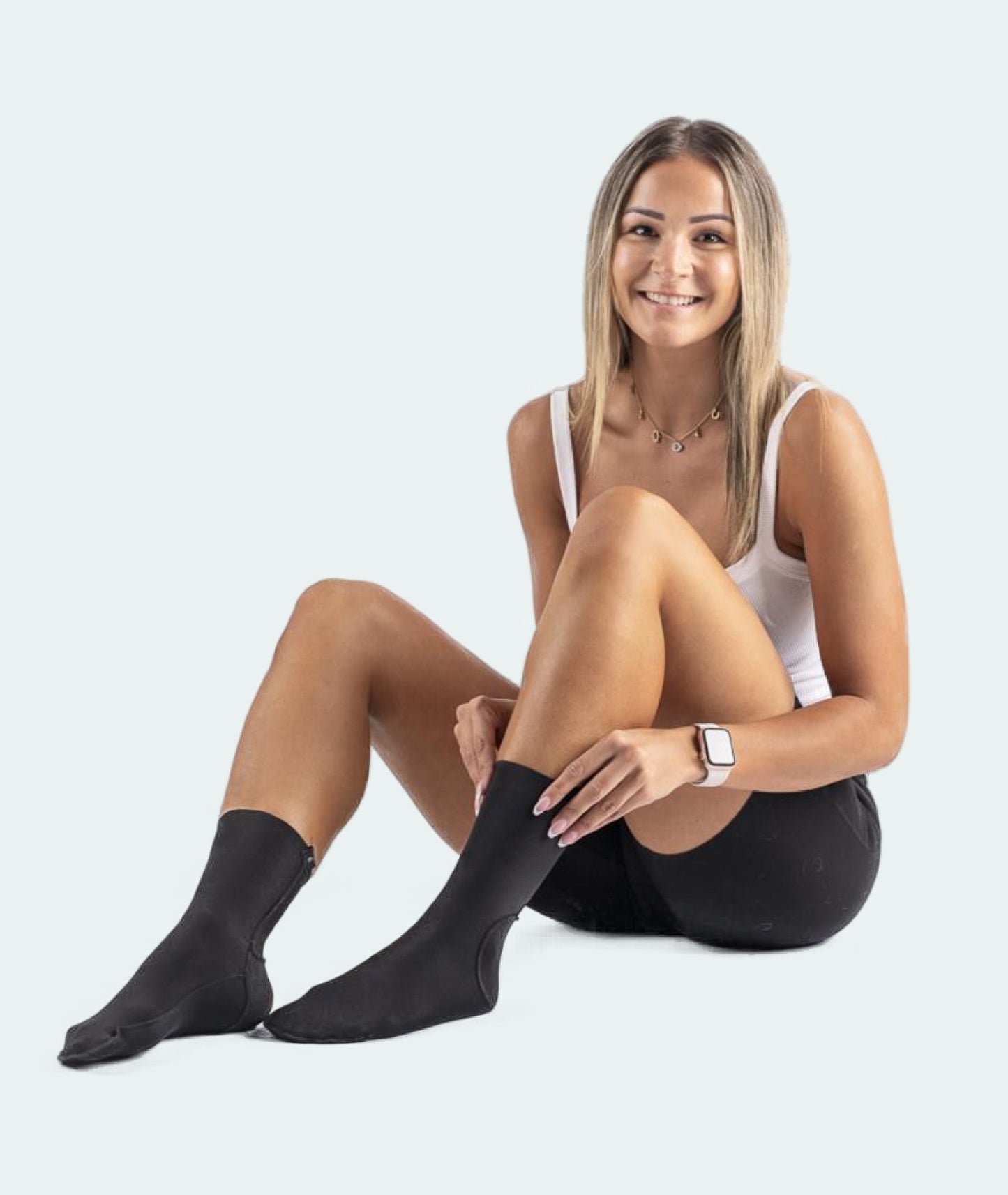Blisters are a common challenge for hikers, turning what should be an enjoyable adventure into an uncomfortable ordeal. These small but painful skin injuries are often underestimated, yet they can quickly derail a trek or even lead to more serious complications like infections if not managed properly.
In this article, we’ll delve into the reasons hikers get blisters, the factors that make them more likely, and practical strategies to prevent and manage them so you can stay focused on the trail ahead.
Understanding Blisters: What Are They and Why Do They Happen?
Blisters form when friction, moisture, and heat combine to damage the upper layers of the skin. This damage causes fluid to accumulate between the layers of skin, resulting in the characteristic bubble-like swelling.
Don’t Let Blisters Slow You Down!
Discover the ultimate solution with ArmaSkin Anti-Blister Socks. Designed with advanced friction-reducing technology, these socks keep your feet dry, comfortable, and blister-free – no matter the challenge.
Shop NowFor hikers, the conditions that cause blisters are amplified due to the long hours of walking, rugged terrain, and the weight of a backpack, which increases pressure on the feet.
Top Causes of Blisters for Hikers
-
Friction from Footwear
Ill-fitting shoes are the most common culprit behind hiking blisters. Shoes that are too tight create pressure points, while loose shoes allow excessive movement of the foot, causing friction.
Common friction hotspots include the heels, toes, and sides of the feet. -
Moisture Build-Up
Sweat from prolonged activity, combined with non-breathable footwear, creates a moist environment inside your shoes. Moisture softens the skin, making it more vulnerable to friction and heat. -
Heat and Pressure
Continuous walking generates heat inside your shoes, which, combined with the pressure from uneven terrain and inclines, increases the likelihood of blisters.
Carrying a heavy backpack can exacerbate this, placing additional strain on your feet. -
Uneven Terrain
Hikers often tackle rocky paths, steep climbs, and descents. These challenging surfaces cause the feet to move more inside the shoes, increasing the risk of blisters. -
Improper Socks
Cotton socks, which retain moisture, are particularly problematic. Without proper moisture-wicking and friction-reducing materials, your feet are more likely to develop blisters. -
Unprepared Feet
Skin that hasn’t been toughened through regular activity is more prone to blisters. This is especially true for novice hikers or those increasing their hiking distances abruptly.

How to Prevent Blisters When Hiking
The good news is that blisters can be largely prevented with thoughtful preparation and the right gear. Here are some proven strategies to keep your feet blister-free on the trail:
1. Choose the Right Footwear
-
Get Properly Fitted Hiking Boots
Ensure your hiking boots fit snugly but not tightly. There should be enough room to wiggle your toes, but your heels shouldn’t lift as you walk.
Visit a professional outfitter to ensure your boots match your foot shape and size. -
Break in Your Boots
Never start a long hike with brand-new boots. Break them in by wearing them on shorter walks to soften stiff areas and identify any potential friction spots.
2. Invest in Quality Socks
The importance of socks in blister prevention cannot be overstated.
-
Wear Blister Prevention Socks
Socks like ArmaSkin Anti-Blister Socks are designed to act as a second skin, reducing friction and wicking moisture away from your feet. They’re perfect for long hikes, helping to keep your feet dry and blister-free. -
Avoid Cotton Socks
Opt for synthetic or wool blends that wick moisture and provide cushioning. Cotton traps sweat and increases the likelihood of blister formation.
3. Keep Feet Dry
-
Use Moisture-Wicking Liners
Pair a thin liner sock with your main socks to enhance moisture-wicking and reduce friction. -
Carry Extra Socks
Change your socks mid-hike if they become damp. Dry feet are far less likely to develop blisters. -
Use Foot Powders
Apply foot powder or anti-blister creams to keep your skin dry and reduce friction.
4. Minimise Friction
-
Use Blister Tape or Plasters
Apply protective tape, like moleskin or specialised blister patches, to high-friction areas before starting your hike. -
Lubricate Problem Areas
Anti-chafing balms or petroleum jelly can reduce friction in vulnerable areas, such as the heels and toes.
5. Strengthen Your Feet
-
Gradually Increase Hiking Intensity
If you’re new to hiking, build up your endurance slowly to toughen your feet and avoid overwhelming your skin. -
Go Barefoot (Occasionally)
Walking barefoot on soft surfaces can help toughen your skin over time, though this should be done carefully to avoid injury. While it can toughen skin, it carries risks of injury and infection. It's not suitable for everyone.
6. Pay Attention to Your Feet During the Hike
-
Check for Hotspots
Stop immediately if you feel areas of discomfort. Address the issue before it develops into a blister. -
Reapply Products as Needed
Refresh your foot powder, cream, or lubricant at rest stops to maintain protection throughout the hike.
Treating Blisters on the Trail
Despite your best efforts, a blister may still form. Here’s how to manage it effectively:
-
Clean and Protect the Area
If a blister appears, keep it clean and cover it with a sterile blister plaster or moleskin to reduce further friction. -
Drain Large Blisters Safely
If a blister is painful or large, you can drain it carefully with a sterilised needle. Leave the skin intact to protect the raw area underneath. Draining blisters at home is generally not recommended unless absolutely necessary and done with extreme caution. It increases infection risk. -
Monitor for Infection
Watch for signs of infection, such as redness, swelling, or pus. If an infection develops, seek medical attention.
Why ArmaSkin Anti-Blister Socks Are a Hiker’s Best Friend
When it comes to blister prevention, ArmaSkin Anti-Blister Socks are a game-changer. Designed with advanced friction-reducing technology, these technical liner socks provide a second-skin fit that shields your feet from the rubbing and moisture that cause blisters.
-
Moisture-Wicking Performance
ArmaSkin socks keep your feet dry, even on long hikes in hot or wet conditions. -
Friction Reduction
The inner layer of the sock is engineered to prevent shearing forces on the skin, drastically reducing the likelihood of blisters. -
All-Day Comfort
With a snug fit and breathable design, ArmaSkin socks ensure your feet stay comfortable mile after mile.
👉 Discover the full range of ArmaSkin Anti-Blister Socks here.
Final Thoughts: Enjoy Your Hike Blister-Free
Blisters are a hiker’s worst enemy, but they don’t have to ruin your adventure. By understanding their causes and taking proactive steps to prevent them, you can focus on the joy of exploring the great outdoors.
For blister prevention solution, invest in a pair of ArmaSkin Anti-Blister Socks. Whether you’re tackling a short trail or a multi-day trek, these socks will keep your feet dry, comfortable, and blister-free—mile after mile.
Ready to step up your hiking game? Shop ArmaSkin Anti-Blister Socks today!Don’t Let Blisters Slow You Down!
ArmaSkin Anti-Blister Socks designed with advanced friction-reducing technology, these socks keep your feet dry, comfortable, and blister-free – no matter the challenge.
Shop Now













